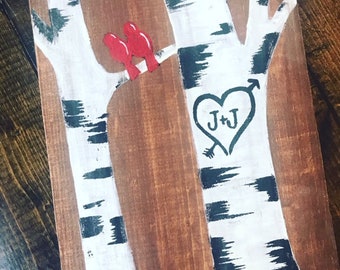

The blade is connected to a long cylindrical cane handle, similar to that of a mid-20th-century tennis racquet, by means of a splice. In 1900 Percy Stuart Surridge developed a reinforced toe. The face of the bat is often covered with a protective film by the user. This variety of willow is used as it is very tough and shock-resistant, not being significantly dented nor splintering on the impact of a cricket ball at high speed, while also being light in weight. caerulea), treated with raw (unboiled) linseed oil, which has a protective function. The bat is traditionally made from willow wood, specifically from a variety of white willow called cricket bat willow ( Salix alba var. Here’s a video tutorial so you can follow along as I make my wood round welcome sign.The blade of a cricket bat is a wooden block that is generally flat on the striking face and with a ridge on the reverse (back) which concentrates wood in the middle where the ball is generally hit. If you need a great bow tutorial, I like this one from Lily Ardor.įinally, attach the twine to the back of the sign using the staple gun to hang onto your front door.

Make sure you lay it out first before gluing it down. I found it easiest to use a glue gun to adhere my decorations onto the wood round. Step 4: Add embellishments and hang on the doorĪrrange your greenery and bow as you like onto the wood round. Slowly remove the liner when cool to the touch.Place the iron-on design face down, liner side up, onto the base and heat at 300☏ for 45 seconds with firm pressure.Preheat the wood base for 5 seconds (preheating pulls moisture from the base to help the iron-on adhere properly).Press your design onto the wood according to the Cricut Heat Guide. For this specific project using Cricut Everyday Iron-On, a wood base, and my EasyPress 2 with mat, I will: Then, use a printed copy as a pattern to cut your vinyl by hand. This vector image will allow you to increase the size without losing resolution. *Be sure to scale the SVG design to the size of your project. Weed the design and preheat your EasyPress 2. Here is the SVG file you can use to recreate the project without a machine*: “Welcome to our home” image file or you can use this file with just the text.“TO OUR HOME” is a Cricut Access font called “Avenida Com”.Here is the Design Space community project: “Welcome to our home” wood round sign.Using your Cricut machine and vinyl material, cut the design with Design Space. If you are not a Cricut user and would like to cut this design by hand, use the SVG file to scale it to your project. Step 2: Cut out a design for the vinyl decoration Take care not to drip stain onto the wood because it will leave spots rather than giving it an even coat.

Brush the wood with the stain sponge or T-shirt. Wearing gloves to protect your hands, use the stain sponge or T-shirt to dip into the stain. Remember a little stain goes a long way! Be sure to use something thick enough to keep the stain from bleeding through the material. Prep and protect your work area by covering it with paper or plastic. Faux greenery (optional for embellishment).Wired edge ribbon (optional for embellishment).Glue sticks (optional for embellishment).Cricut machine (or scissors to hand cut a design).Table covering (to protect the surface).Follow along using just a few materials and household items to complete this simple DIY home project for your door, garden, kitchen, or any other space that might need a fun sign. Wood round welcome signs with customized iron-on vinyl decoration can help you spruce up your front door without too much work.


 0 kommentar(er)
0 kommentar(er)
